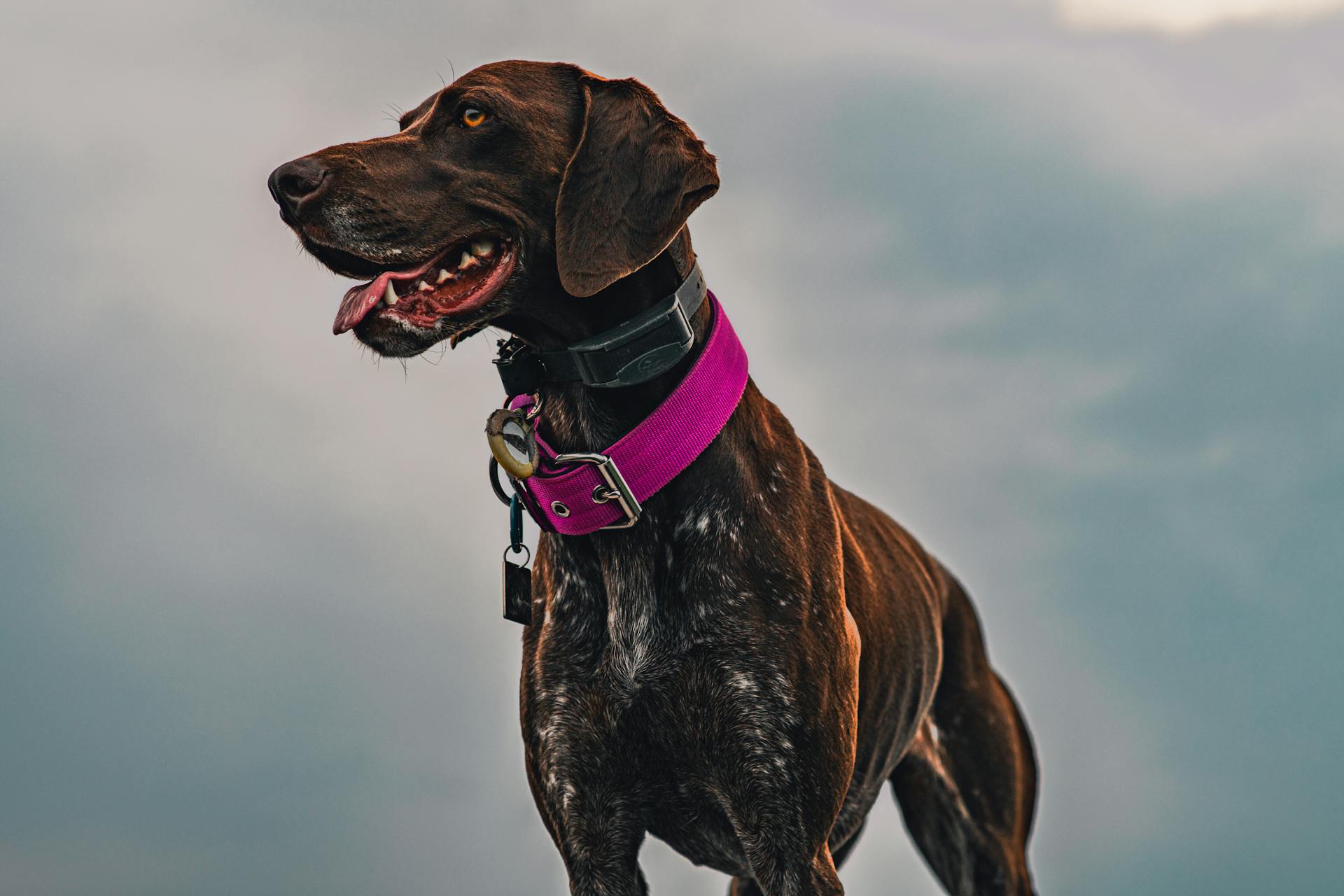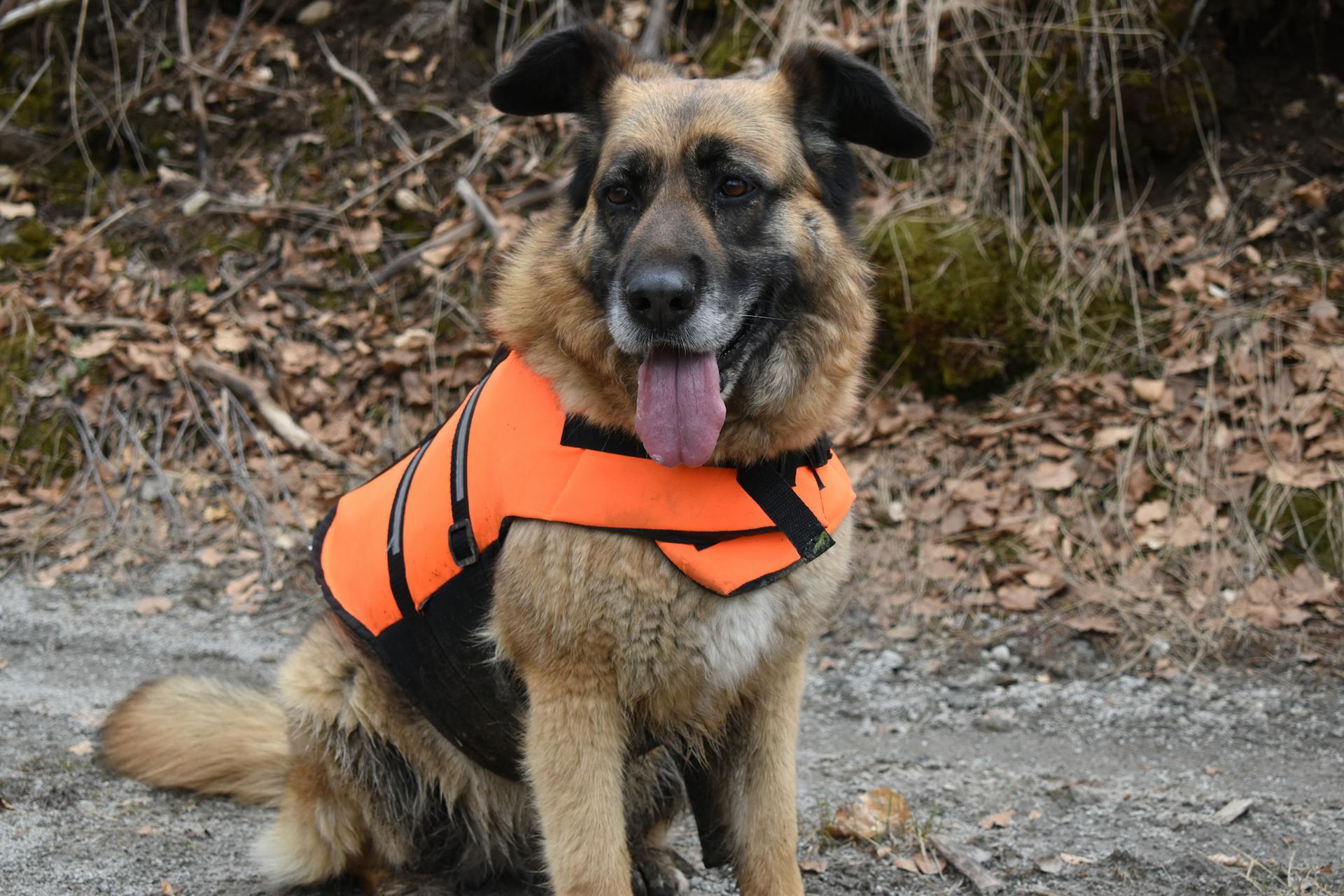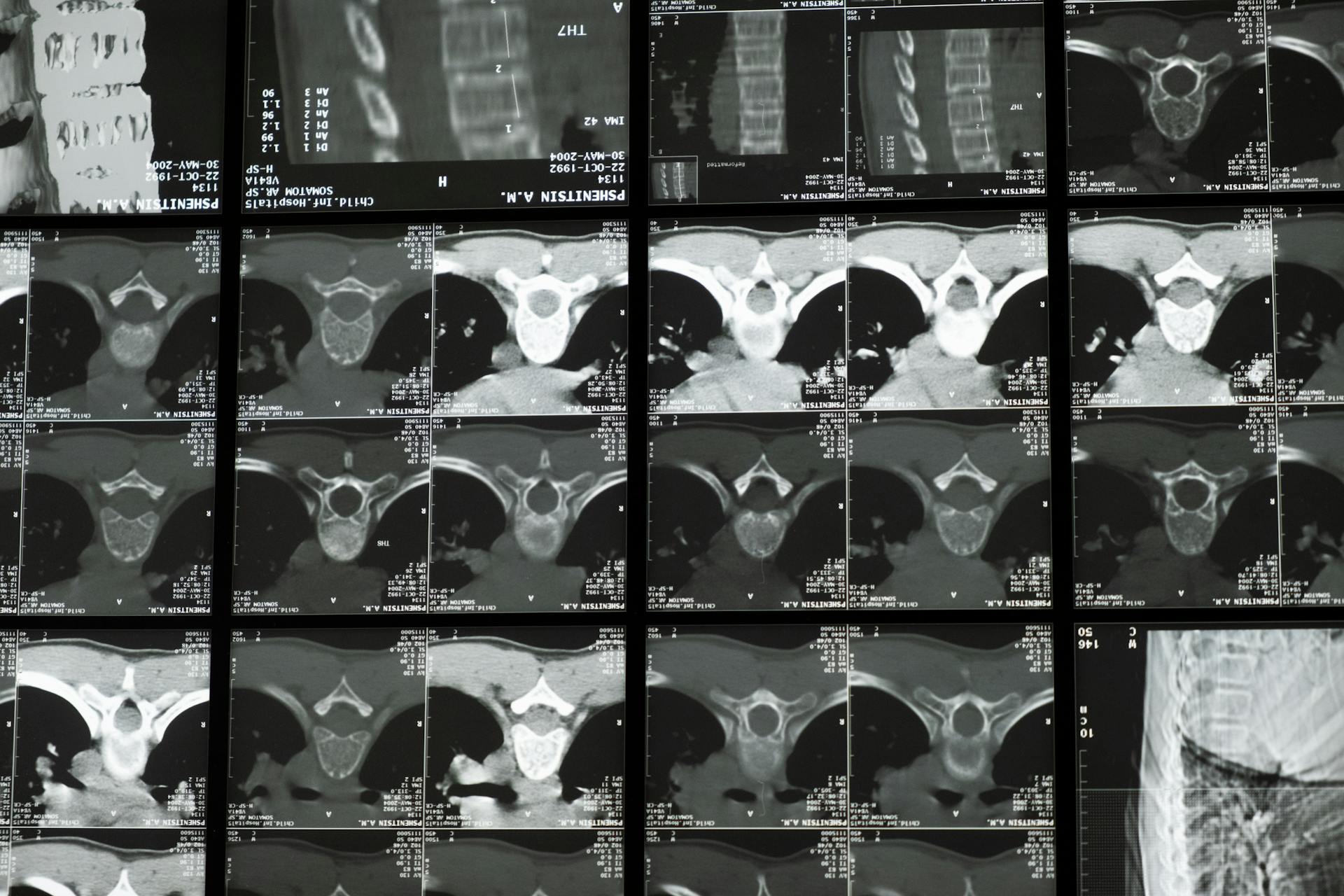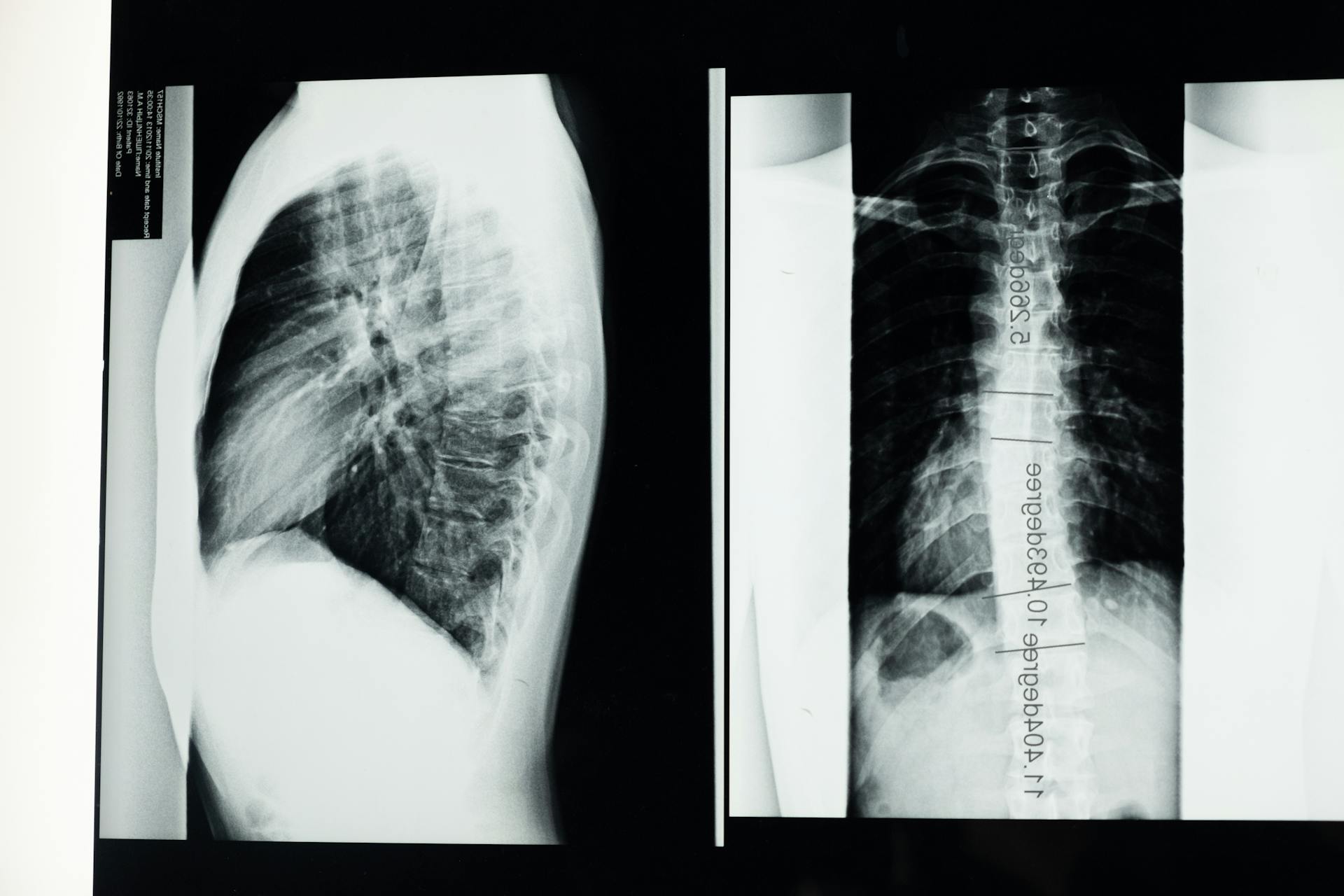
The Westphalian Dachsbracke is a rare and unique breed of dog that originated in Germany. They were bred to hunt badgers and other small game.
These dogs are known for their distinctive appearance, with a short, smooth coat that comes in a variety of colors. They typically weigh between 35-50 pounds and stand between 18-22 inches tall.
Their friendly and outgoing personalities make them great family pets, but they do require regular exercise and mental stimulation to prevent boredom and destructive behavior.
Character and Temperament
The Westphalian Dachsbracke is an intelligent breed that's known for being highly focused and having an incredible sense of smell. This makes them excellent scent hounds.
They're also determined and persistent, which can be both a blessing and a curse. If they're on the scent of something, they'll follow it relentlessly.
One of the things that sets Westphalian Dachsbrackes apart is their strong hunting instinct. They're driven by a desire to track and locate game, which can sometimes lead them to chase small animals.
A different take: Scent Hound Dogs
Despite their hunting instincts, Westphalian Dachsbrackes are also affectionate and friendly, making them wonderful family pets. They form strong bonds with their owners and are particularly good with children.
However, their hunting instincts do mean that they require proper socialization and training from an early age. This will help them learn to control their impulses and behave in a way that's safe and respectful.
Westphalian Dachsbrackes are generally eager to please and quick to learn, but they can be independent and stubborn at times. Consistency and patience are key when training them, and positive reinforcement techniques like treats and praise work well.
Overall, the Westphalian Dachsbracke is a loyal and loving companion that thrives in homes with active owners who can provide them with plenty of mental and physical stimulation.
Curious to learn more? Check out: Are German Shepherds Good for First Time Owners
Care and Nutrition: Reasonable Demands
The Westphalian Dachsbracke is a relatively low-maintenance breed when it comes to grooming. Regular brushing, preferably daily, keeps their short coat free from dirt.
Their diet is also quite straightforward. They require high-quality, nutrient-dense food, with portion sizes adjusted to their activity level. Whether it's dry or wet food, or even a raw diet (BARFing), the choice is up to the owner.
To prevent obesity, which can lead to various health problems, it's essential to provide them with a balanced diet and regular exercise. Feeding them in appropriate portions and engaging them in daily physical activities such as walks, runs, or playtime can help maintain their weight.
Their ears, however, require regular care to prevent infections. Long, droopy ears can trap moisture, leading to the growth of bacteria or yeast. Regular ear cleaning with a veterinarian-recommended solution can help prevent infections.
Here are some guidelines for their care and nutrition:
- Daily brushing to keep their coat clean
- High-quality, nutrient-dense food with adjusted portion sizes
- Regular exercise to prevent obesity
- Regular ear cleaning to prevent infections
Grooming and Nutrition
Their coats are dense and coarse, so they need regular grooming to prevent matting and tangling.
Their ears are prone to infections, so weekly checks are a must to catch any issues early on.
Trim their nails if they don't wear them down naturally, and bathe them a few times a year to keep them clean.
To keep them healthy, feed them high-quality kibble that's rich in protein, and consider adding treats and snacks in moderation.
A 35-pound Westphalian Dachsbracke needs about 2.5 cups of kibble per day to stay energized and thrive.
Grooming
Grooming is a crucial aspect of Westphalian Dachsbracke care. These dogs have a dense and coarse coat that can come in red to yellow color with black saddle or mantle and white markings.
Their droopy ears require regular checks to prevent ear infections. You should inspect their ears weekly for bad odor, redness, or wax build-up.
Trimming their nails is a good idea if they don't wear them out naturally. Bathing them a few times a year is sufficient for their coat.
Brushing their teeth is essential for fresh breath and healthy gums. This simple habit can make a big difference in their overall health.
Colour of Coat
The Westphalian Dachsbracke's coat is a beautiful rich tan shade, ranging from light to dark.
This unique coloration is due to the breed's genetic makeup, which is a result of their history as hunting dogs.
Their tan coat is short and dense, providing protection and insulation in various weather conditions.
It's also worth noting that the tan color is often accompanied by black markings on their body, which can appear as a black saddle-like pattern on their back.
These markings can also be found on their face, ears, and legs, adding to their distinctive appearance.
The tan coat is complemented by a white patch on their chest, which adds a touch of contrast to their overall appearance.
Their dark brown eyes also contribute to their unique look, adding depth and intensity to their expression.
The color of their coat not only enhances their appearance but also serves a functional purpose, helping them blend seamlessly into their natural surroundings.
Consider reading: Dark Border Terrier
Nutrition
Westphalian Dachsbracke dogs are high-energy dogs, so they need a high-protein food source. This means you should choose a high-quality kibble for your pup.
A 35-pound Westphalian Dachsbracke needs 2.5 cups of high-quality kibble each day to thrive and stay healthy. Don't skimp on the quality of the food or your pup might not get the energy they need.
To prevent obesity, be mindful of how many treats and snacks you give your Westphalian Dachsbracke.
Worth a look: Alpine Dachsbracke
Size and Weight
The Westphalian Dachsbracke is a small dog with a compact build. They typically reach a height of 30 to 38 centimeters at the withers.
Their weight is relatively consistent, ranging from 18 to 24 kilograms. This is a great size for a hunting dog, making them agile and easy to maneuver in the field.
Their strong build and elongated back make them well-suited for their hunting purpose.
Appearance
The Westphalian Dachsbracke is a small dog, standing about 30 to 38 cm high at the withers.

Its height range is between 12 to 15 inches.
It has medium-long drooped ears, which are a distinctive feature of this breed.
The Westphalian Dachsbracke has short legs, which are longer than those of the Dachshund.
The coat has short fur, usually tricolor, with a black saddle and white markings called Bracken marks.
A white muzzle, chest, legs, collar, and tip of the tail are typical Bracken marks, along with a blaze on the head.
The chest is more narrow than the Dachshund's chest.
If this caught your attention, see: Dachshound
Size and Weight
The Westphalian Dachsbracke is a small dog, reaching a height at the withers of 30 to 38 centimeters.
They have a strong, compact build and an elongated back, making them a sturdy little breed.
In terms of weight, the Westphalian Dachsbracke typically weighs around 18 to 24 kilograms.
Their dense and short fur is rather coarse, which suits their active hunting lifestyle.
The classic colouring of the Westphalian Dachsbracke is tricolour, with a red to yellow base colour, a black saddle, and white markings.
Hunting and Employment
Westphalian Dachsbrackes have a strong hunting drive and high need for exercise, so they need to be extensively occupied every day. They enjoy long walks and are ideally suited for demanding activities such as mantrailing and tracking work due to their keen sense of smell.
As hunting dogs, they'll dive into dens and burrows and clear them out with ease. If you're looking for a hunting companion, a Westphalian Dachsbracke is an outstanding choice.
They have a keen sense of smell and are naturally inclined to chase small game, so it's essential to provide them with plenty of mental and physical stimulation to prevent boredom and destructive behavior at home.
Worth a look: Dog Sense of Smell vs Human
Hunting Dogs
Westphalian Dachsbrackes are bred to be hunting dogs, originating from Germany in the 1800s.
Their strong hunting drive and high need for exercise mean they require extensive occupation every day, making them ideal for demanding activities like mantrailing and tracking work.
These dogs have a keen sense of smell, which makes them well-suited for tracking and hunting.
Westphalian Dachsbrackes are low-ground hunters that can dive into dens and burrows with ease.
In fact, they're so skilled at hunting that they were used for this purpose in small hunting areas, particularly in Germany's North Rhine-Westphalia region.
If you're an active hunter, a Westphalian Dachsbracke can be an outstanding companion, but they're not for everyone - they need plenty of exercise and mental stimulation to prevent issues at home.
Their hunting instinct is strong, but if socialized from puppyhood, they can live harmoniously with cats and other pets.
Ultimately, owning a Westphalian Dachsbracke requires a commitment to providing regular exercise and challenging activities to keep them happy and healthy.
Endangered Hunting Dog Breed
The Westphalian Dachsbracke is one of the most endangered hunting dog breeds due to a narrow breeding base.
In Germany, only about 35 puppies are born per year, making it a critically low number.
To expand the gene pool and secure the breed's survival, Drevers, a Swedish dog breed, are occasionally crossed in with the Westphalian Dachsbracke.
The Drever originated from the Westphalian Dachsbracke, showing the close connection between these two breeds.
Frequently Asked Questions
What is dachsbracke in english?
The Dachsbracke is a type of short-legged hunting dog that originated from crossbreeding Dachshunds with long-legged Bracken scenthounds. It's a unique breed with a rich history in German hunting traditions.
Sources
- https://worlddogfinder.com/breeds/westphalian-dachsbracke
- https://www.look4dog.com/en_gb/dog-breeds/scent-hounds/westphalian-dachsbracke
- https://www.zooplus.co.uk/magazine/dog/dog-breeds/westphalian-dachsbracke
- https://en.wikipedia.org/wiki/Westphalian_Dachsbracke
- https://www.dogster.com/dog-breeds/westphalian-dachsbracke
Featured Images: pexels.com


